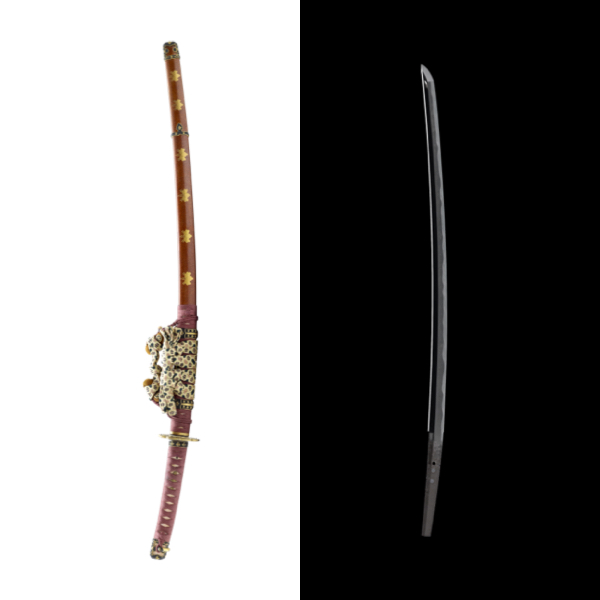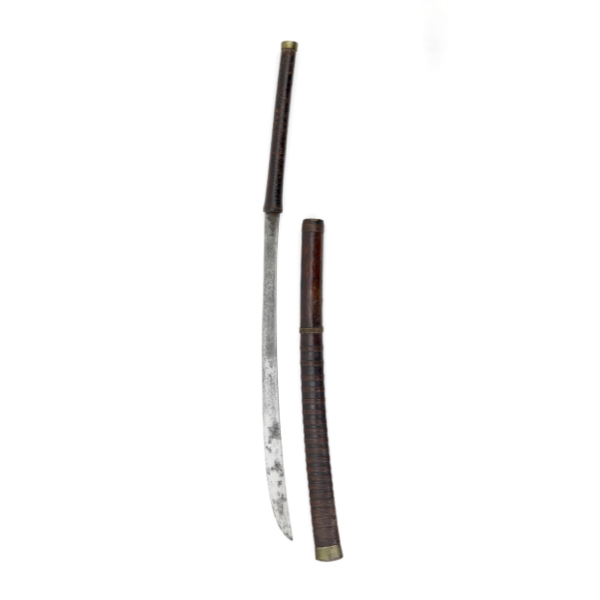
A plain dha
Of a type likely produced by the Shan people and traded widely in the region.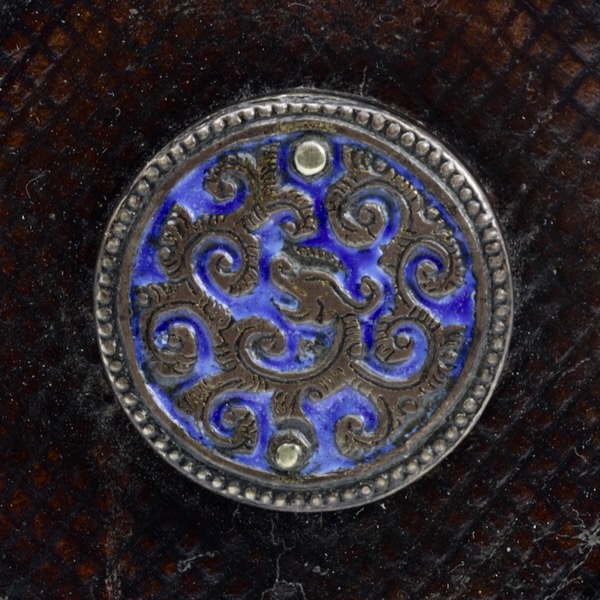
Kuíwén (夔紋)
Chinese decorative pattern consisting of archaic dragon motifs.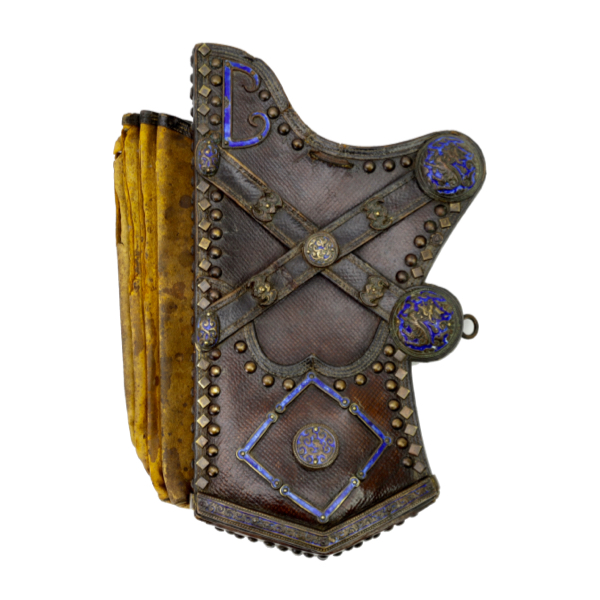
Rare imperial xièzhì decorated quiver
Xièzhì are mythical animals and were the emblem of the Qing censorate.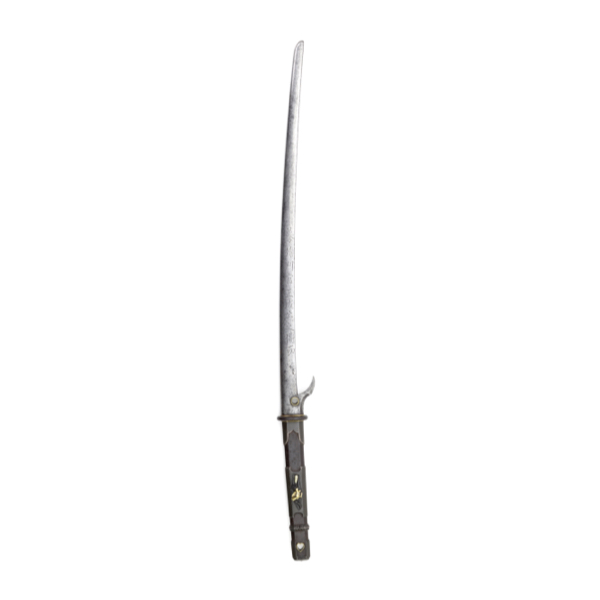
Hachiwari (鉢割)
Language: Japanese
Origin: Old literature
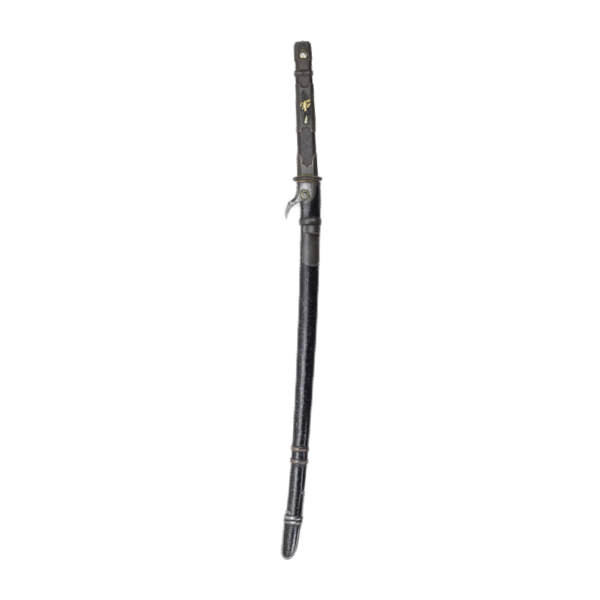
Very good hachiwari
Literally "skull splitter", more widely known as kabutowari; "helmet splitter." An excellent example, one of the best of its type.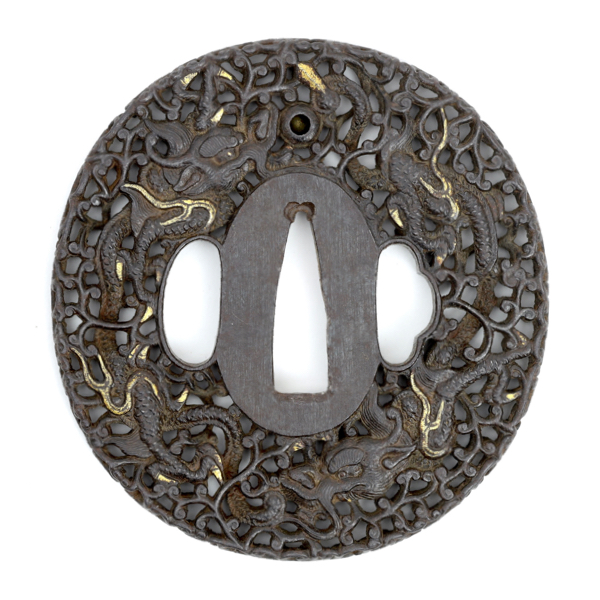
Yagami school nanban tsuba
A masterpiece of the genre. The Yagami school were excellent carvers of iron.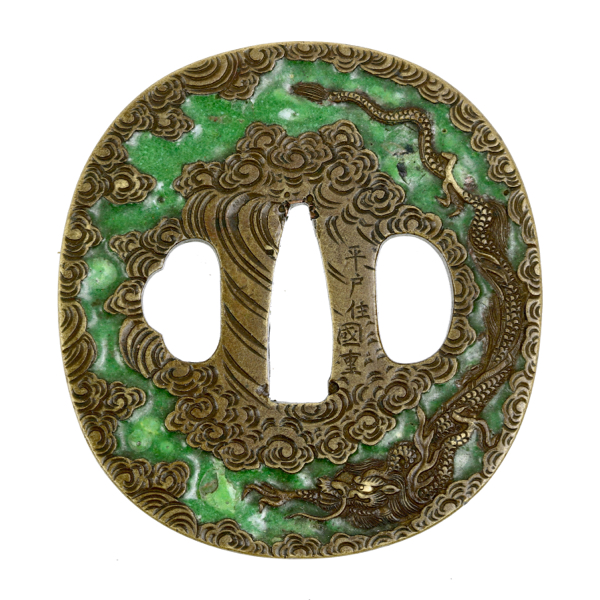
Enamelled Hirado Kunishige tsuba
Fine work and one of the very few enamelled tsuba by this maker.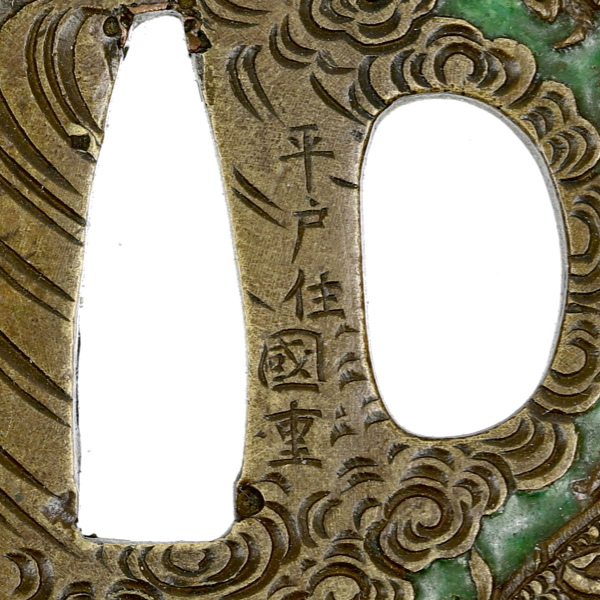
Hirado Kunishige (平戸市國重)
A group of Japanese sword fitting makers working on the island of Hirado.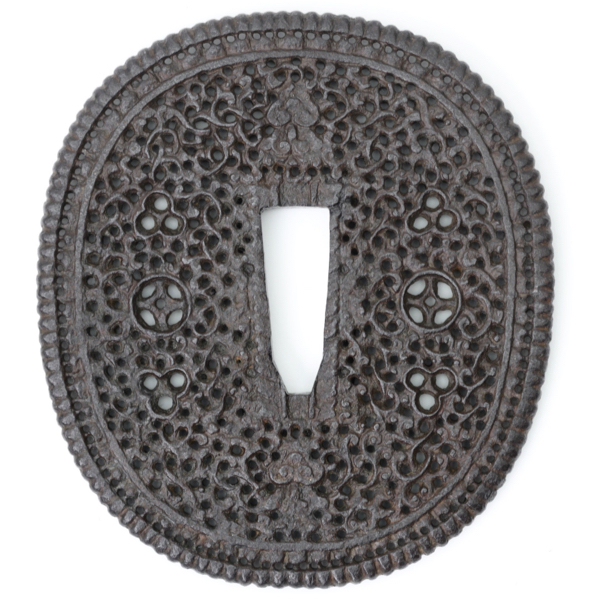
Yidao guard
Exceptionally large pierced iron guard for a Chinese yidao; "virtuous saber".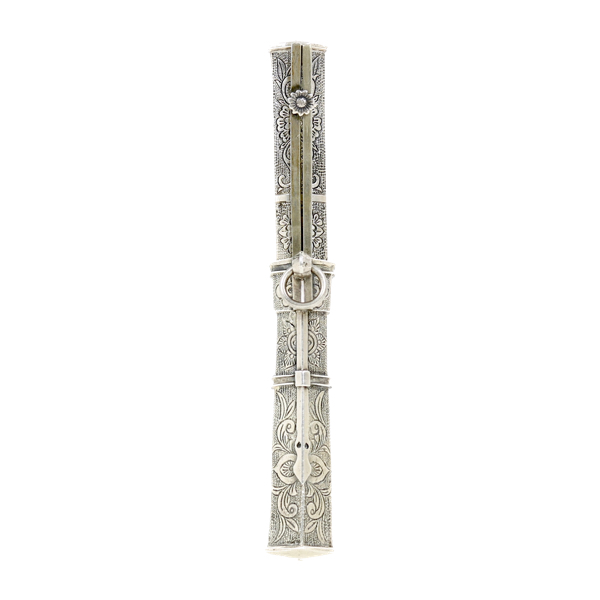
A fine Korean eunjangdo
With all silver construction, including the blade.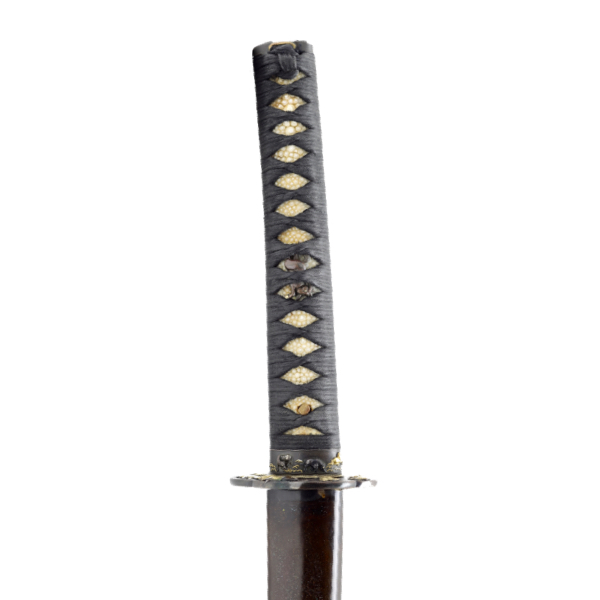
Katana in horse theme koshirae
Blade signed Sesshū-jū Fujiwara Hiroyoshi, active in the 1670s-80s.
Three wise monkeys tsuba
Japanese sword guard depicting three wise monkeys conveying the message see no evil, hear no evil, speak no evil.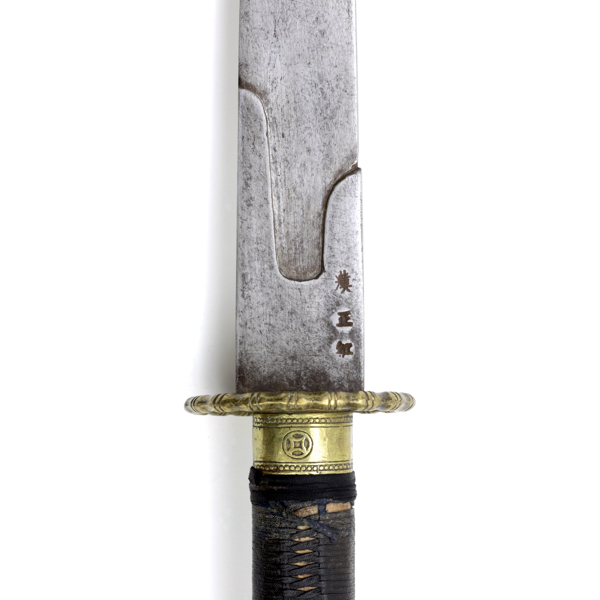
Han Plain Red Banner saber
Southern Chinese saber made for a soldier under the Plain Red Banner.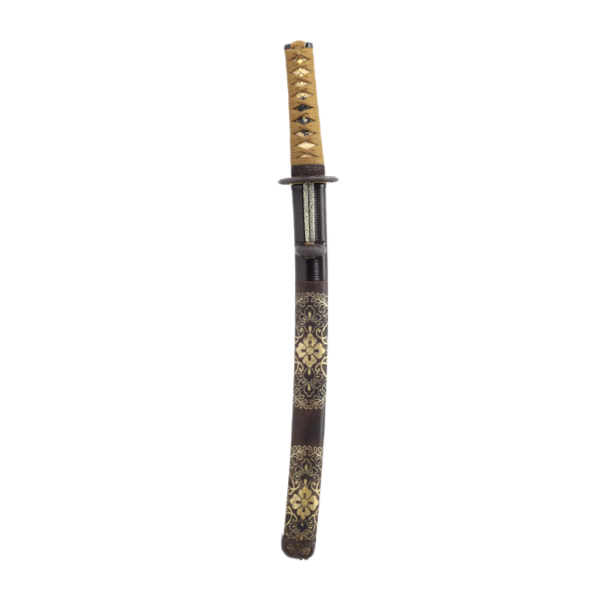
Shimosaka o-tantō
N.B.T.H.K. Hozon with a set of Nanban-style koshirae with signed tsuba.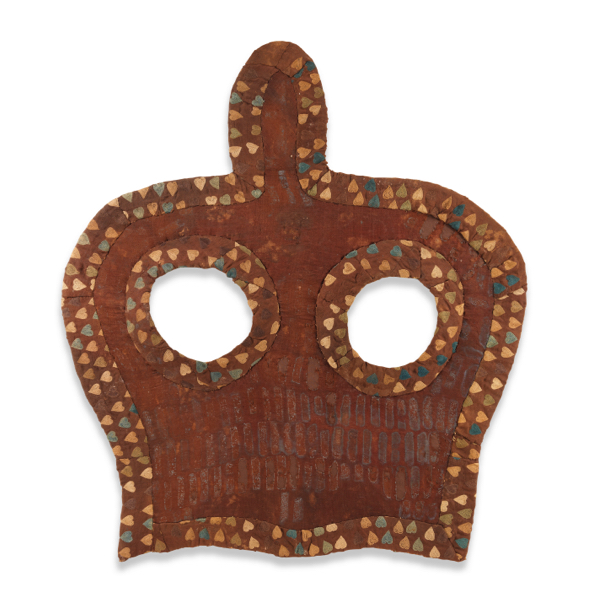
Northern Wei shaffron
Silk horse mask from the Xianbei ruled dynasty which ruled northern China from 386 to 534 A.D.
Tongzhou incident 29th army dàdāo
With markings attributing it to the Tongzhou incident and a Japanese surrender tag.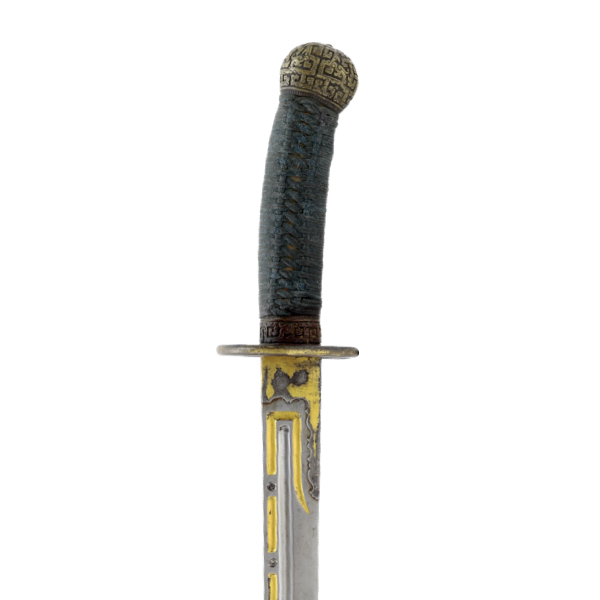
Qing peidao with gold grooves
With fine 18th century blade that combines many stylistic features.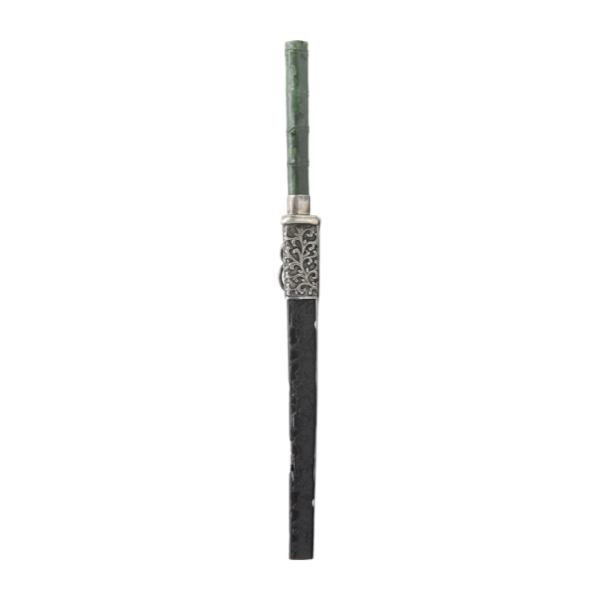
Jade bamboo hilted knife
With spinach green jade handle and carved buffalo horn scabbard.
Important Ko-Hōki Sadatsuna katana
12th-century blade. 33rd Shinsha Juyō Token with sayagaki by Tanobe.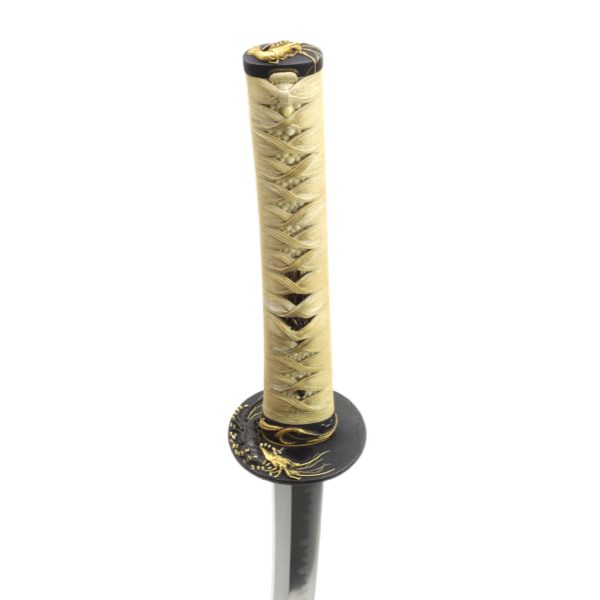
Jumyo katana with fine koshirae
The very detailed mountings are decorated with designs of Japanese spiny lobsters.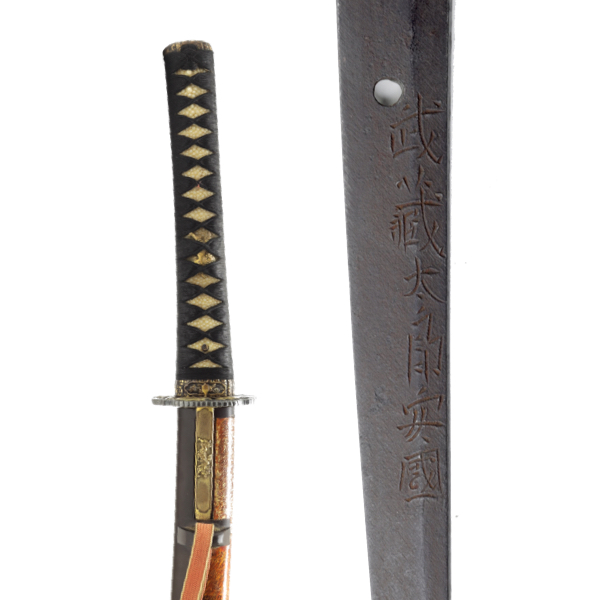
Katana by Musashi Taro Yasukuni
Signed, ubu. Complete with tasteful koshirae and Hozon papers.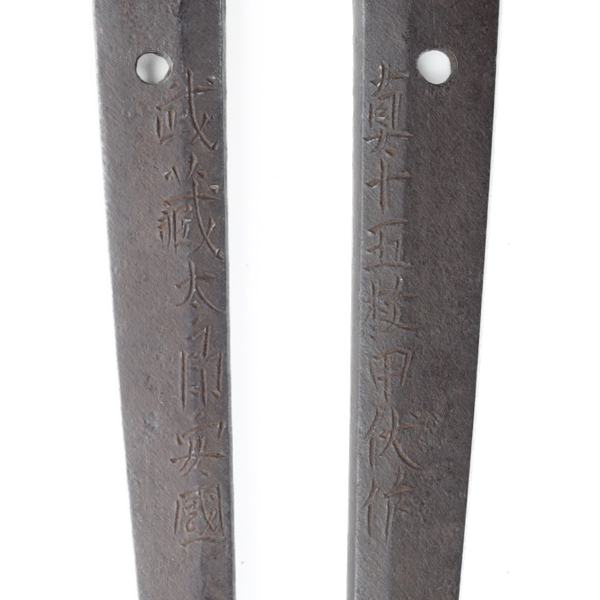
Musashi Taro Yasukuni (武蔵太郎安国)
A Japanese swordsmith who lived between 1650-1730.
Chinese ring pommeled knife
Of a type used by bandits, brigands, pirates, and the like.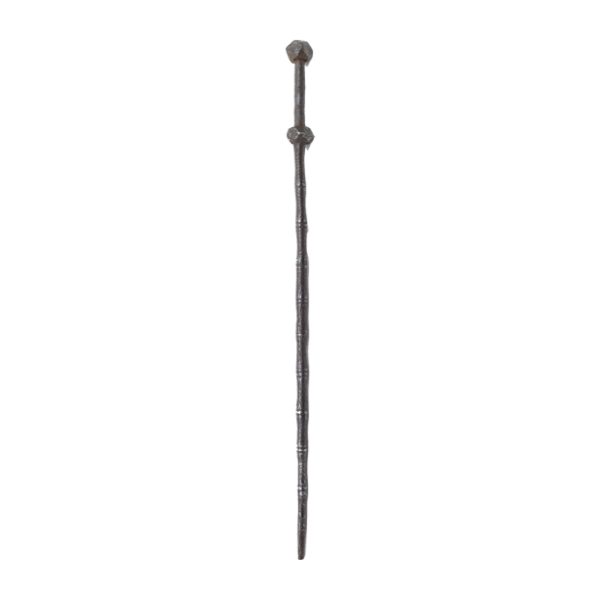
Chinese tiěbiān mace
A Chinese "sword breaker" with the rarer, bamboo-sectioned rod.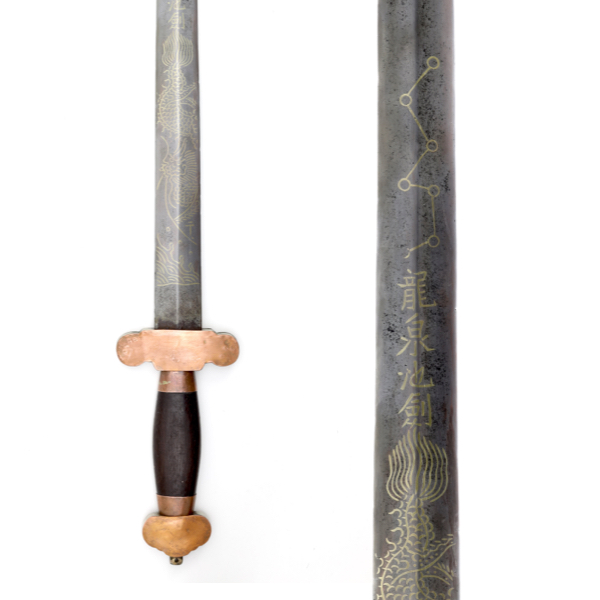
Longquan jiàn by Qian Zi Hao
A Chinese shortsword made by a well-known Longquan maker.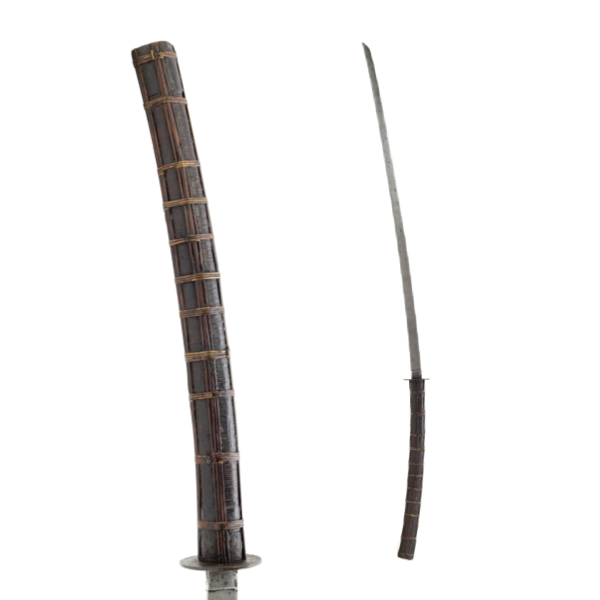
Cambodian long saber
Sized like the Chinese changren dadao, yet the execution of the hilt is Cambodian.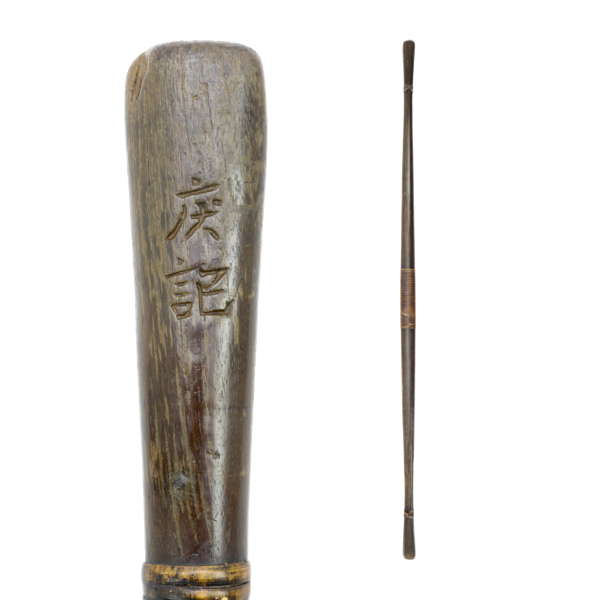
Chinese fighting carrying pole
A heavily executed Chinese carrying pole that was used as a weapon.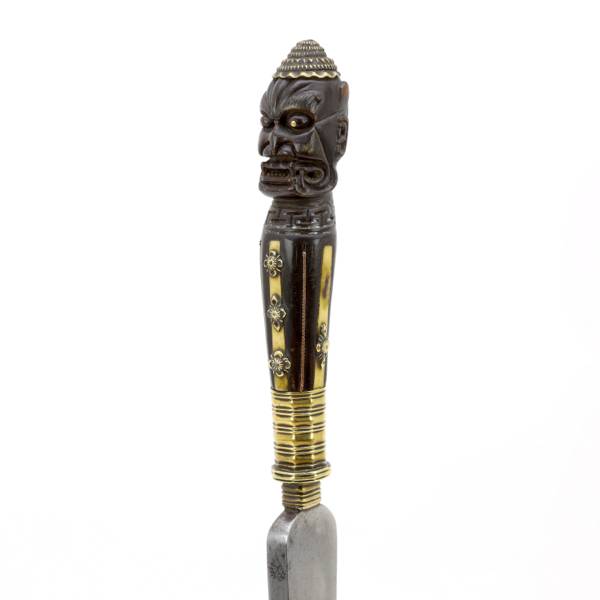
Chinese demon head saber
Based on a Chinese military saber blade, with unusual horn demon hilt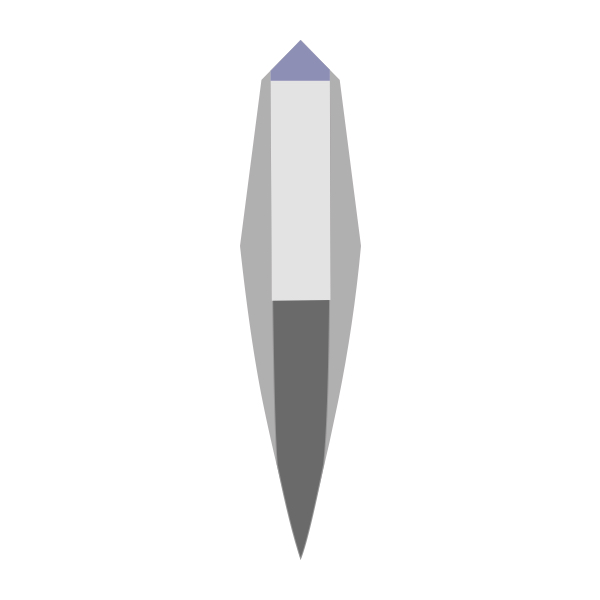
Shihōzume-gitae (四方詰め鍛え)
Japanese word for a sword construction with a high carbon edge, low carbon core, medium carbon sides and a separate back.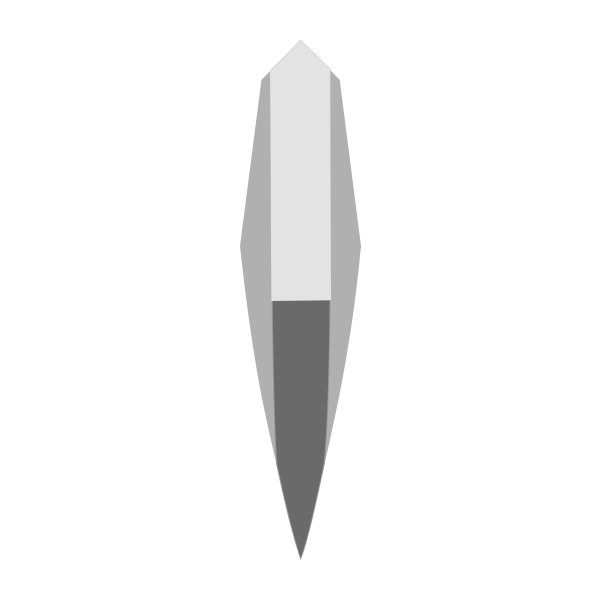
Hon-sanmai-gitae (本三枚鍛え)
Japanese word for a sword construction with a high carbon edge plate under a soft core, flanked by medium steel.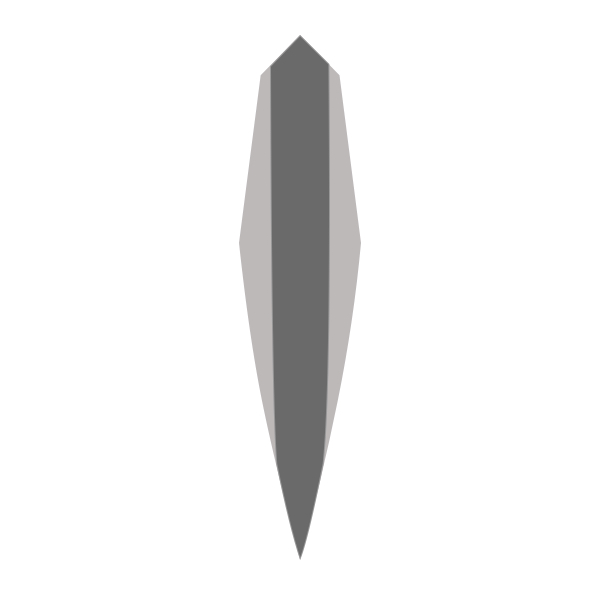
Sanmai-gitae (三枚鍛え)
Japanese word for a sword construction with a center high carbon edge plate.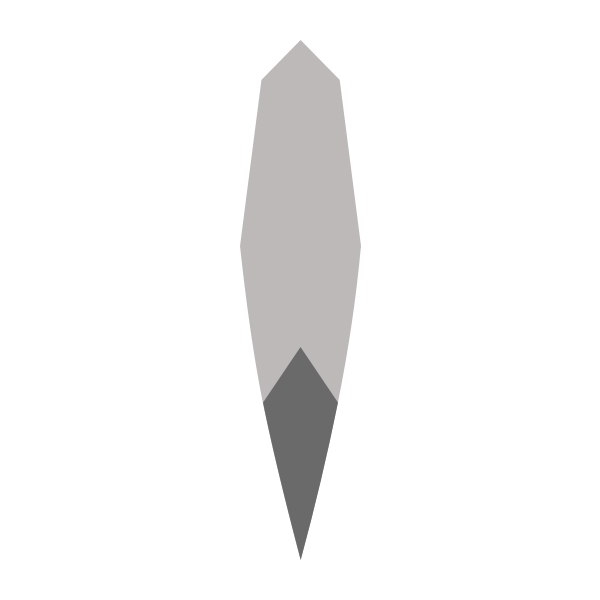
Wariha-gitae / wariba-gitea (割刃鍛え)
Japanese term for a sword construction with an inserted edge made of higher carbon steel.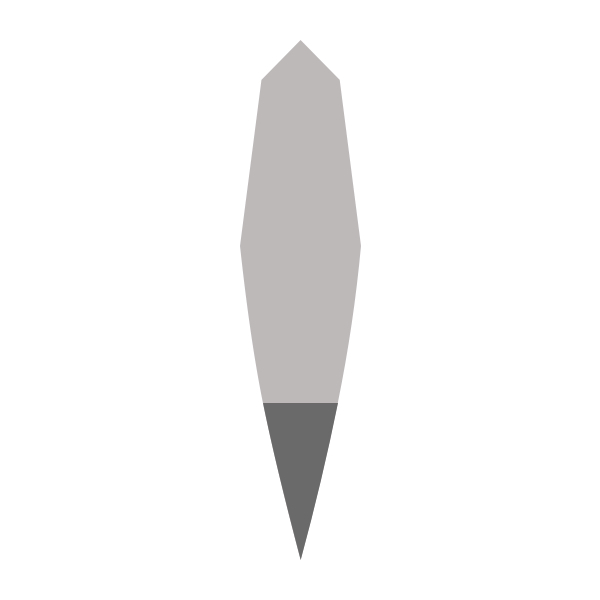
Hyoshigi-gitae (拍子木鍛え)
Japanese term for a sword construction with an edge made of higher carbon steel.
Maru-gitae (丸鍛え)
Japanese word for a basic blade construction consisting of one type of steel.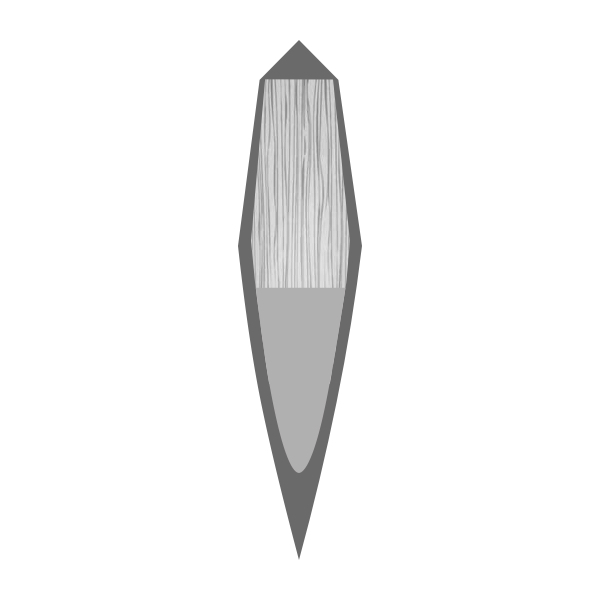
Shin jūgomai kōbuse-gitae (真十五枚甲伏鍛え)
Japanese sword construction that is was found inscribed on some tangs.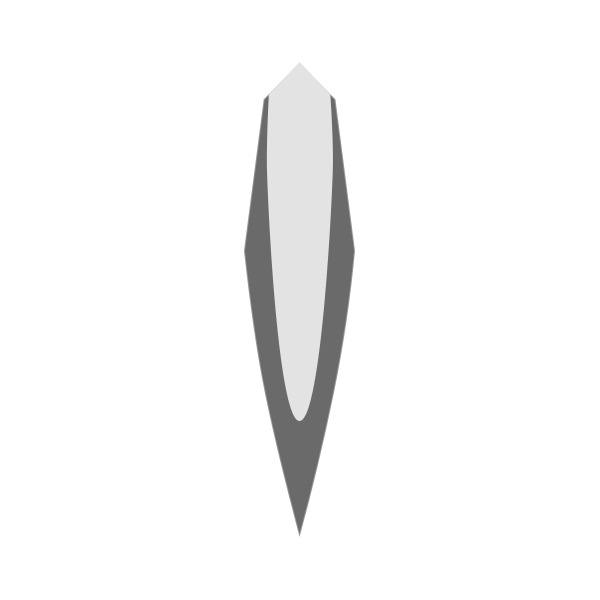
Kōbuse-gitae (甲伏せ鍛え)
Japanese word for a sword construction with high carbon steel outer jacket around a softer core.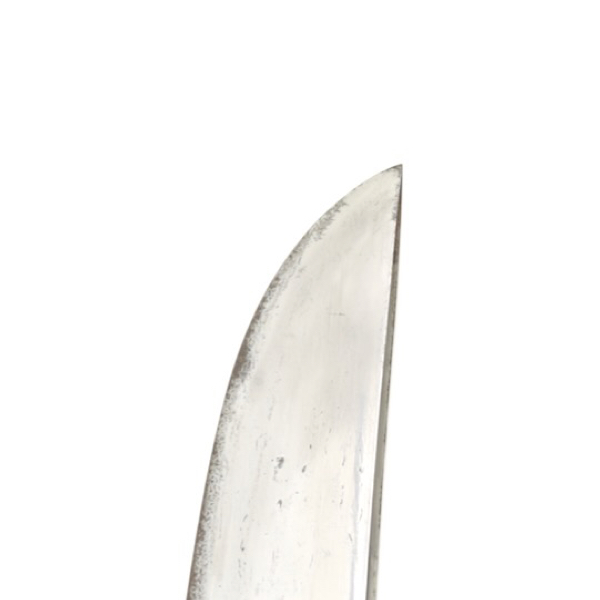
Kanetuhu / Etuhu
Ainu words for the point of a knife or sword.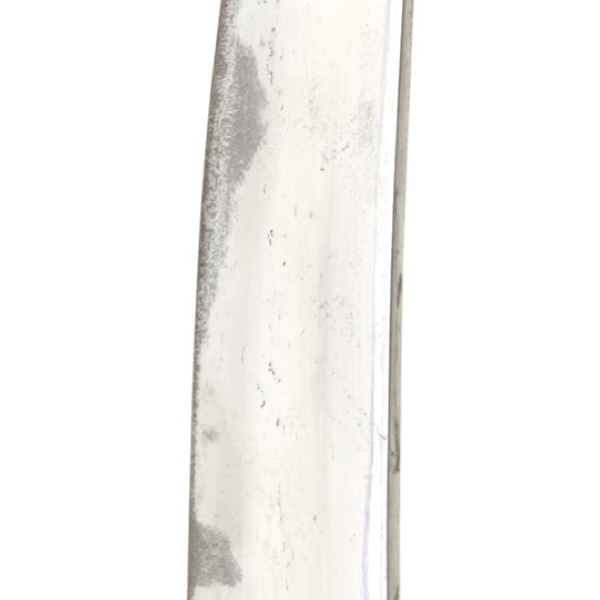
Notak
Ainu word for the edge of a sharp tool like a knife.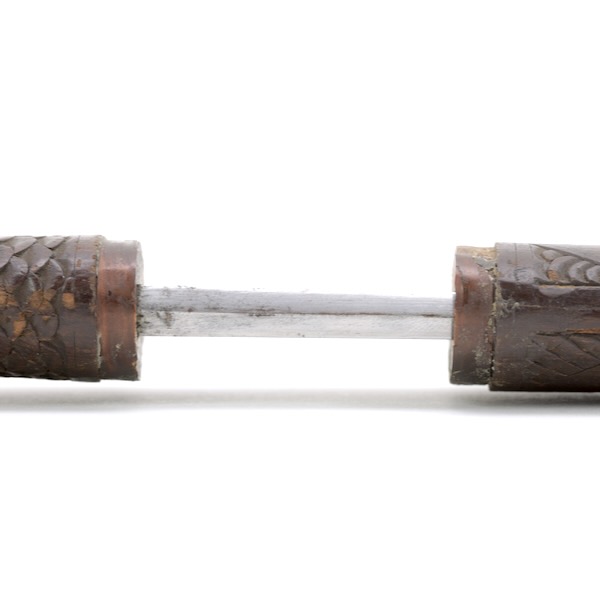
Mekkashike
Ainu word for the back of a knife, or sword. Also the ridge of a mountain or house.
Makiri-saya
Ainu word for the scabbard of a utility knife called makiri.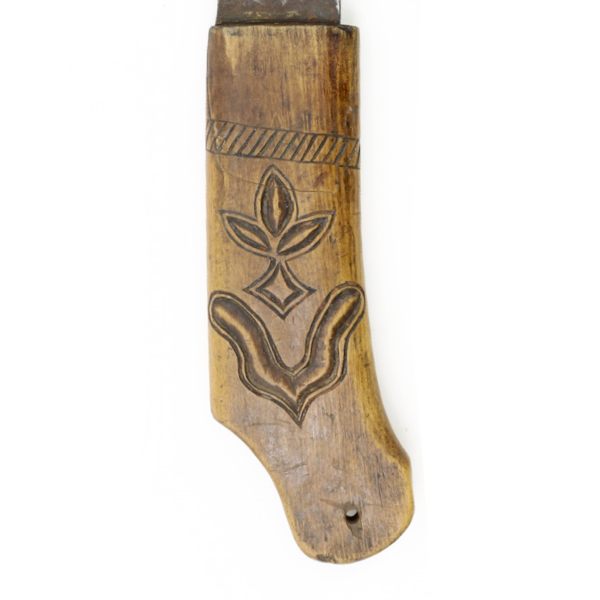
Makiri-nip
Ainu word for a knife handle.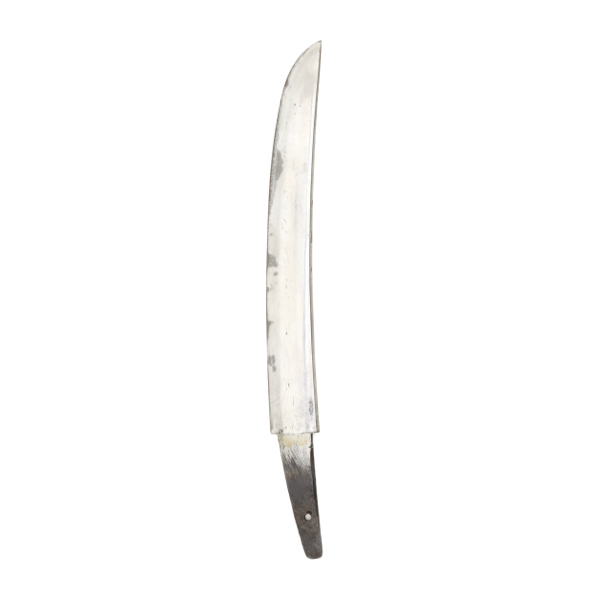
Ibehe
Ibehe is an Ainu word for a knife or sword blade.
Nioi (匂)
Japanese word for fine martensite crystals in the blade's temperline.
Nie (沸)
Japanese word for martensite crystals that form in blade under certain conditions.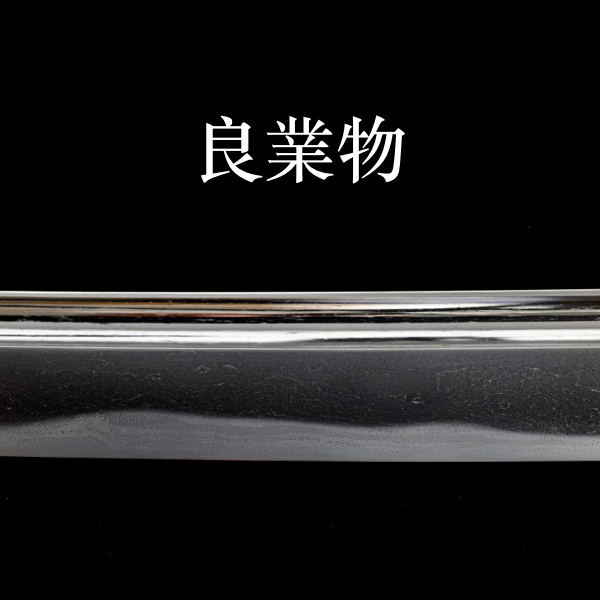
Yoki Wazamono / Ryō-wazamono (良業物)
Japanese term for a sword with the third highest rated cutting ability.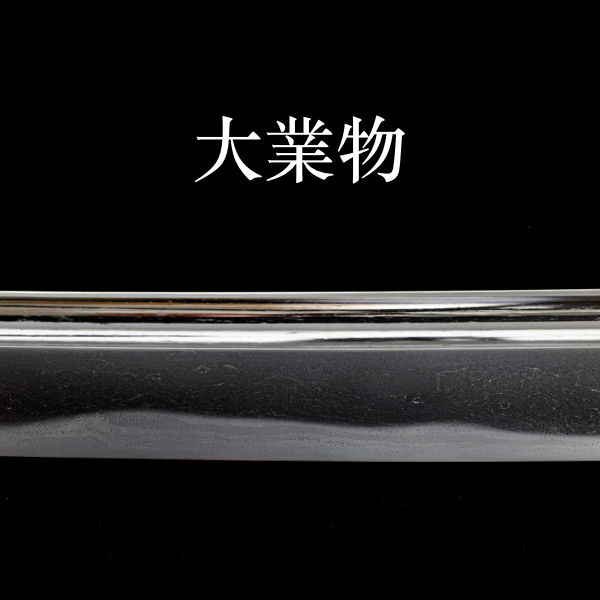
Ō Wazamono (大業物)
Japanese term for a sword with the second highest rated cutting ability.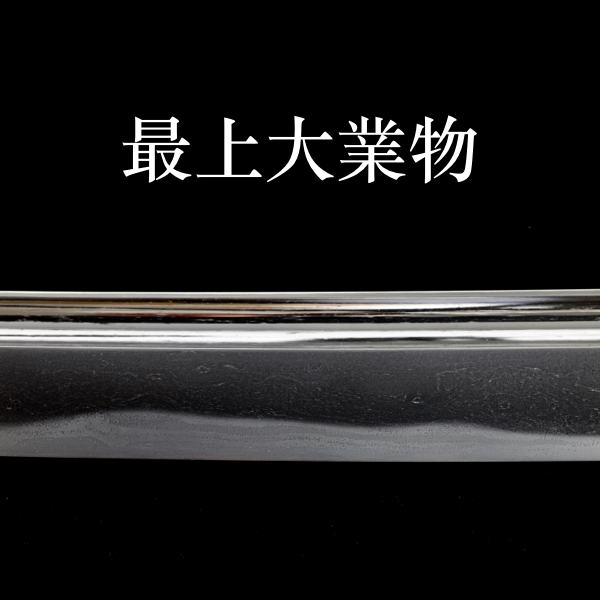
Saijō Ō Wazamono (最上大業物)
Japanese term for a sword with the highest rated cutting ability.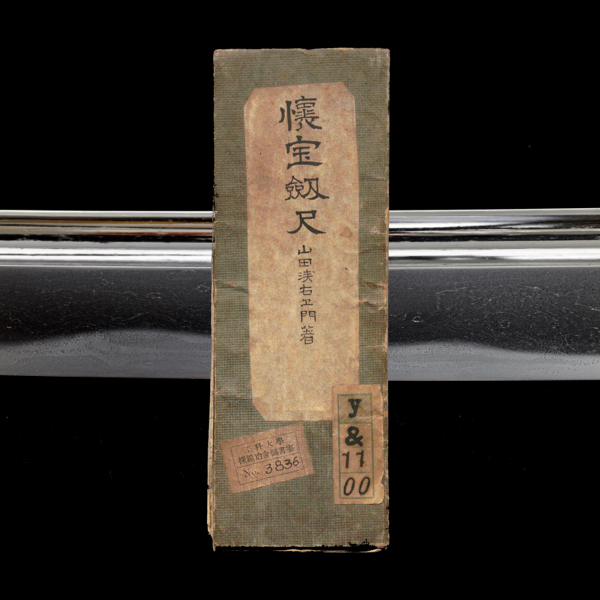
Wazamono (業物)
Japanese term for a sword that is tested to cut well.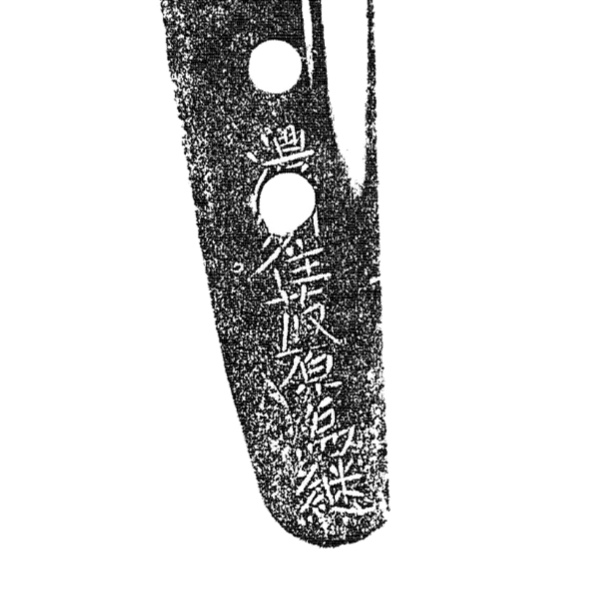
Tametsugu (為継)
A Japanese swordsmith in the Shōshū tradition.